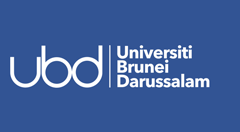ASEAN Journal on Science and Technology for Development
Abstract
Adsorption by activated carbon is an effective method of dye removal. However, due to high production and regeneration costs of activated carbon, various studies on low-cost adsorbents have been conducted. Agricultural waste such as rice husk (RH) is seen to be a good adsorbent for dye removal. Moreover, rice husk is readily available. In this study, rice husk-based adsorbents were prepared by chemical and thermal treatments. Standard curve (colour vs absorbance) for Direct Blue 86 (DB 86) was prepared to determine the concentration of dye before and after adsorption. The adsorption potential of the adsorbent for textile dye DB 86 was evaluated by batch adsorption tests. The most effective adsorbent, RH6, was selected and its DB 86 adsorption capacity was determined and compared with that of commercial powdered activated carbon (PAC). The optimum pH for DB 86 removal was pH 2 for both adsorbents. The optimum contact time was observed to be 180 min for both RH6 and PAC. The optimum adsorbent dosage was 4 g/L for RH6 and 3 g/L for PAC. Both Langmuir and Freundlich isotherm models provided high correlation coefficients R2 (>0.97); with Langmuir isotherm R2 >0.99. The adsorption capacity obtained was 34.4828 mg/g and 47.6190 mg/g for RH6 and PAC, respectively. Pseudo second order kinetic model yielded high R2 values (>0.99) and much closer values of qe,exp and qe,cal (amounts of solute adsorbed determined experimentally and using the model equation) to show that the model describes the adsorption mechanism better than the pseudo first order kinetic model. RH6 has potential to be used as adsorbent for dye removal from wastewater.
Publication Date
2024
Received Date
15 September 2023
Revised Date
20 October 2023
Accepted Date
29 October 2023
Recommended Citation
Zua, M. Zulbahari M.; Mustafa, Muhammad Raza Ul; Isa, Mohamed Hasnain; Manan, Teh Sabariah Binti Abd; Ibrahim, Naimah; Juani, Rozeana Hj Md; Suhaili, Wida Susanty Hj; Sultan, Asmaal Muizz Sallehhin Bin Hj Mohammad; and Nayan, Zuliana Binti Hj
(2024)
"Direct Blue 86 textile dye removal from aqueous solution using rice husk-based adsorbent,"
ASEAN Journal on Science and Technology for Development: Vol. 40:
No.
3, Article 13.
DOI: https://doi.org/10.61931/2224-9028.1552
Available at:
https://ajstd.ubd.edu.bn/journal/vol40/iss3/13
Included in
Chemical Engineering Commons, Environmental Engineering Commons, Environmental Sciences Commons

